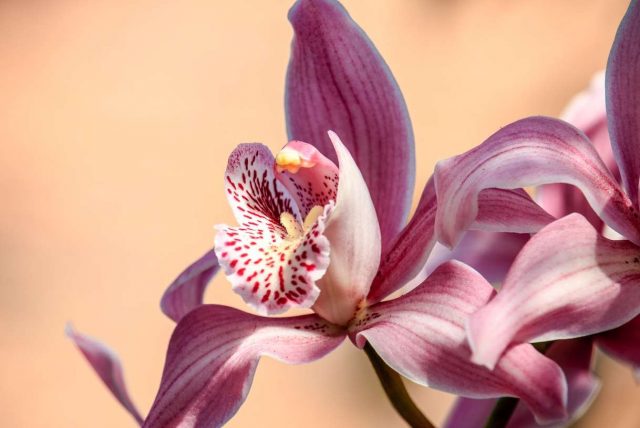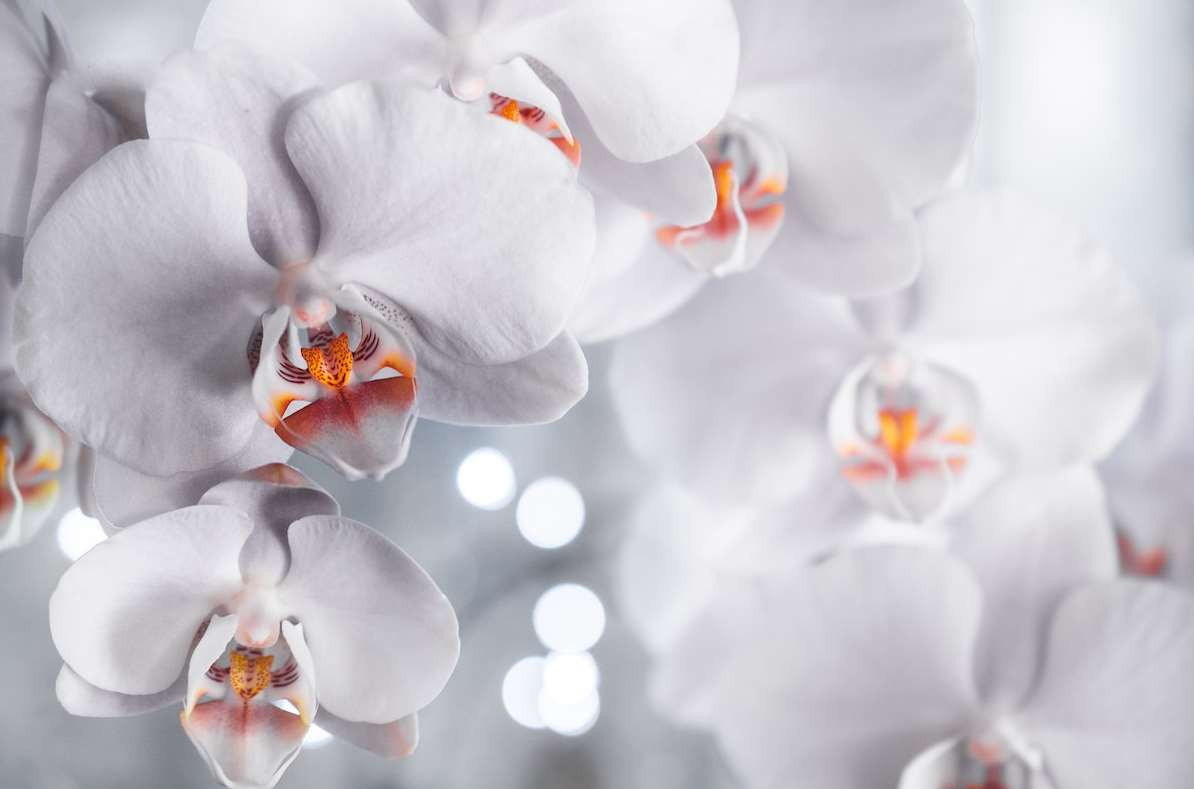Orchids are truly remarkable and captivating flowers with a diverse history spanning over 100 million years. Found in various ecosystems, these 25000 species of plants have been used for medicinal purposes, spiritual rituals, and even to bring luck or ward off evil spirits.
For centuries, orchids have inspired us with their intricate details, mysterious beauty, and the depth of their symbolism – not to mention the many orchid plant benefits they offer. From boosting your mood and relieving stress to helping purify the air around you – no matter how we interpret them, their magical presence remains ever-present in our lives today.
Origin and Distribution
Orchids have long been admired for their exquisite beauty and rich history. They are believed to be one of the oldest flowering plants, having originated in Southeast Asia over 50 million years ago before spreading across all continents except Antarctica. Today, they can grow everywhere, from tropical jungles and deserts to high mountain ranges and peaceful meadows.
Their remarkable ability to adapt has enabled them to survive even in harsh climates such as northern Canada and Siberia. As a result, over 25,000 species of orchids are known today, with wide new varieties being discovered each year.
Although these species vary greatly in size, shape, color, and patternation, some common characteristics remain consistent throughout different types: a three-petalled lip that forms a pouch when fully open; sepals, which form an outer casing around the petals; and numerous stamens located at the center of the flower head.
The variety of orchid species also enables them to take on diverse ecological roles within certain habitats. For instance, certain species may act as primary pollinators for other plant life. In contrast, others offer medicinal benefits for humans and animals, making them an ecologically and economically invaluable resource.
By understanding more about the origins and distribution of orchids, we can more deeply appreciate the fascinating complexity of this unique group of flowers. As we move into studying their classification systems, it is clear why they continue to captivate us so completely.
Classification of Species
To delve deeper into the world of orchids, there is no better place to start than by looking at their classification. Orchid species are as diverse and colorful as a rainbow, making them one of the most popular flower varieties in the world. However, understanding how these beautiful flowers fit together like a jigsaw puzzle can be daunting for even the most experienced orchid historian.
- Orchid Classification: The first step in classifying an orchid is its genus identification. Orchids belong to either the monocotyledonous family Orchidaceae or the subfamily Epidendroideae, which encompasses almost 30,000 different species across 800 genera. This large number of species makes it difficult to differentiate between them without proper knowledge and experience in correctly identifying each kind.
- Species Diversity: Different regions around the globe have different types of orchids that grow wild and make up part of nature’s beauty. In addition to this natural diversity in species composition, hybridization has enabled gardeners and scientists to create new varieties with unique characteristics not found in any other type of flower.
- Species Identification: With so much variety available, it can be tricky to identify individual plants from similar-looking ones belonging to other families or genera. To help novice botanists distinguish between different kinds of orchids, many resources, such as books on floral morphology, have been published over time, providing detailed descriptions of various aspects, including leaves, petals, and reproductive organs, which can be used for accurate identification purposes.
No two species are ever quite identical—something that sets this gorgeous bloom apart from all other flora! Familiarizing ourselves with its taxonomic structure gives us insight into why they c in so many shapes and sizes while adding another layer of admiration to our appreciation for these fragile yet magnificent wonders of Mother Nature’s handiwork. Now let’s discuss cultivation and care for these precious blooms!
Cultivation and Care
The cultivation and care of orchids are important to maintaining their beauty and health. Proper potting, watering, and fertilization techniques are essential for successful growth. When selecting a pot for your orchid, drainage holes should be at the bottom to ensure proper water flow.
Additionally, the container must have enough room for roots to spread out as they grow. A soil mix allowing adequate aeration around the root system is also beneficial.
Watering an orchid requires knowledge of its needs, which can vary depending on type and climate conditions. Generally, most varieties require moist but not overly wet soil; however, some species may prefer drier soil. A good approach is to wait until you notice the top layer of the soil begins to dry before adding more moisture. Too much water can damage flowers and inhibit future blooms, so getting this right is important! Fertilizing with specially formulated orchid food will provide additional nutrients for healthy growth.
Considering all aspects of growing orchids ensures long-term success and enjoyment from your plant(s). With attentive maintenance, many different kinds can flourish indoors or outdoors in appropriate climates. Furthermore, once mastered, cultivating beautiful blooms becomes easier over time with practice—something gardeners everywhere continue striving towards today! Having discussed how best to cultivate these plants, we now consider their cultural significance throughout history.
Cultural Significance
Moving on from the cultivation and care of orchids, it is important also to consider their cultural significance. Orchids have had a long history as symbols in many cultures worldwide. They are often seen to symbolize love, beauty, fertility, and elegance.
In some religions, they are even used for spiritual beliefs and traditional customs such as religious ceremonies and offerings of thanksgiving.
In addition to being revered as symbols of spirituality, orchids can also be found in various social settings. For example, orchid flowers can represent honor and success at formal events like weddings, graduations, and funerals. Also, sending someone an orchid has become a sign of appreciation in some cultures across time and space.
The importance of orchids goes beyond just symbolic representation; their medicinal uses have been documented since ancient times. Ancient Greeks believed that consuming certain species would increase strength and virility, while Chinese herbalists prescribed them for numerous ailments, including asthma, heart palpitations, and infertility.
These days, scientists continue studying the healing properties of different species in hopes of finding cures for illnesses ranging from cancer to Parkinson’s disease.
Orchids’ unique combination of beauty, symbolism and potential medicinal use has made them coveted plants throughout human history, making them truly worthy objects of cultural and scientific admiration.
Uses in Medicine and Science
Orchids have had a long and varied history with medicinal uses, scientific research, and therapeutic effects. Orchids have been studied for their pharmacological properties and ecological functions for centuries. Here is an overview of the various ways in which orchids are being used today:
From traditional medicines to modern-day bioprospection, orchids offer unique solutions to many medical ailments. They also provide insight into plant conservation efforts through genomic analysis and taxonomic classifications.
Additionally, these beautiful flowers can be used in aromatherapy treatments or simply enjoyed as ornamental plants in home decorating projects. Orchid extracts may contain anti-inflammatory compounds that could help replace synthetic insect repellents.
There is much potential to explore when it comes to utilizing orchids for practical and recreational purposes. As such, these exotic species continue to draw the attention of researchers worldwide who strive to unlock the secrets of this captivating flower family. With more knowledge about its healing qualities and other benefits still to be discovered, the future looks bright for those interested in advancing our understanding of orchid biology and its applications.
Uses In Art, Literature, And Design
The beauty of orchids has been so widely revered that it has inspired generations across cultures to use them in art, literature, and design. The symbolism associated with the flower has also embedded itself into many visual works over time. Orchid motifs, from 19th-century watercolors and paintings to modern digital artwork, have been used for centuries.
Orchid images can be found on murals, ceramics, textiles, sculptures, and more, celebrating these blooms’ remarkable shape and delicate nature.
In literature, too, orchids are often featured as symbols of love, hope, or joy. From poetry to novels to romantic comedies, authors have long drawn upon the power of this beautiful flower to express emotion through words. Many writers continue to find inspiration in orchids today by featuring their unique imagery within storylines and characters’ arcs.
Finally, orchid designs are popular throughout fashion accessories such as jewelry, scarves, and handbags. Their intricate petals provide a perfect canvas for intricate embroidery patterns, while the vibrant colors lend themselves well to any wardrobe combination.
Similarly, they adorn wallpaper borders, furniture pieces, and home décor items like vases and lamps, allowing homeowners to inject some floral flair into their living space without being overwhelmed by color schemes or textures.
It is no wonder, then, why people around the world choose orchids when expressing themselves artistically! As we explore the current status of these flowers, let us take a moment to appreciate their illustrious history in art, literature, and design, which will undoubtedly continue far into the future.
Current Status
Orchids have become a major part of popular culture, and the trade in orchid species is vast. Unfortunately, the growing popularity has meant that many species are threatened due to deforestation, habitat destruction, and climate change. As such, conservation efforts for wild orchids have increased in recent years, with organizations like the International Orchid Conservation Alliance leading research projects on endangered species.
In addition to their presence in nature, the cultivation of orchids has also seen enormous growth over time. Home hobbyists and commercial growers produce thousands of hybrids yearly, increasing orchid diversity considerably. It is estimated that there are more than 30,000 known orchid hybrids today!
These developments demonstrate how far the world has come since Carl Linnaeus first named and classified the genus Orchis in 1753. Today, we can see both cultivated varieties and wild orchids gracing our gardens and landscapes worldwide thanks to modern-day hybridization techniques introduced by Charles Darwin.
While much progress has been made toward understanding and preserving these beautiful plants for generations, there’s still work to protect wild populations from illegal poaching and threatened habitats caused by human activities. It’s up to us to ensure that this precious biodiversity remains intact so future generations can continue to enjoy these unique gifts of nature.
Conclusion
Orchids have been part of the human experience for thousands of years and continue to captivate gardeners worldwide despite challenges that threaten their survival. As an avid historian of this remarkable species, I am proud to recognize its immense beauty and cultural significance across different countries.
With our help and understanding of how precious orchids are, we can ensure they remain an integral part of history for generations.

Speaks from heart, always too passionate and driven by emotions. Spins the words with kindness & sharpness, intriguing your ever-inscrutable minds.



